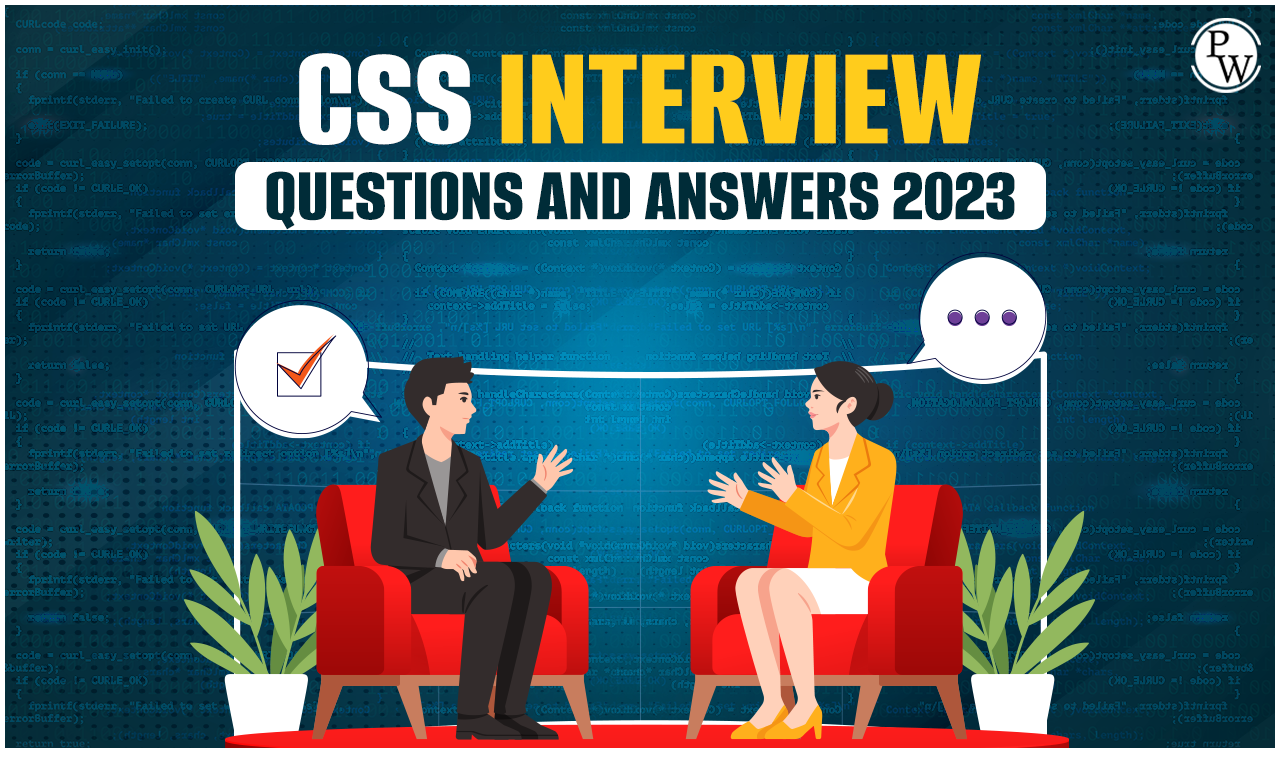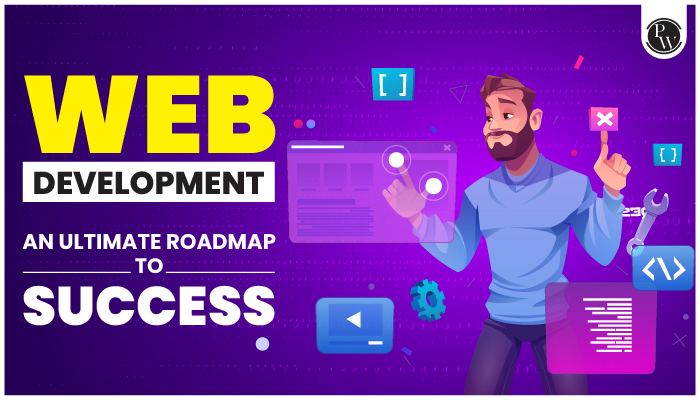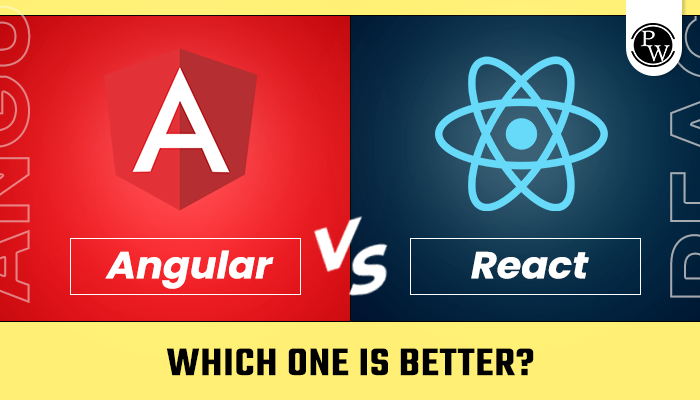CSS stands for Cascading Style Sheet. It’s a special language used to control how elements and contents on a web page are presented. In other words, CSS determines the look and appearance of a website, making it visually appealing and consistent across all its pages.
The World Wide Web Consortium (W3C) is responsible for developing and maintaining CSS. It was introduced to the world on December 17, 1996, and has been evolving. The CSS Working Group collaborates with various browser vendors to ensure that all web browsers uniformly support new features and specifications.
One of the most significant benefits of using CSS is its ability to separate content from presentation. This means that a webpage’s actual information and structure can be separated from how it’s styled and displayed. This separation offers a high degree of flexibility and control over the appearance of a website.
Web designers can easily modify the styles without altering the content, making creating consistent and visually appealing websites simpler. CSS enhances websites’ overall look and feel, making them attractive and user-friendly while maintaining a consistent design.
CSS Interview Questions
Q1. What is CSS?
Ans. CSS, which stands for Cascading Style Sheet, is a widely used styling language that works with HTML to create visually appealing and well-designed websites. It’s not only limited to HTML; you can also use CSS with various XML documents, including plain XML, SVG, and XUL, to enhance their presentation.
Q2. What is the origin of CSS?
Ans. CSS finds its roots in SGML (Standard Generalized Markup Language), which is a language defining various markup languages.
Q3. What are the different Variations of CSS?
Ans. CSS has gone through several versions, and some of its different variations include CSS1, CSS2, CSS2.1, CSS3, and CSS4.
Q4. How will you Integrate CSS on a Web Page?
Ans. To integrate CSS on a web page, there are three methods you can use:
- Inline Method: This involves inserting style sheets directly into the HTML document.
- Embedded/Internal Method: This method allows you to add unique styles to a single document.
- Linked/Imported/ External Method: When you want to make changes across multiple pages, you can use this method by linking or importing an external CSS file.
Q5. Mention advantages of CSS:
Ans. CSS offers several advantages for website design, including:
- Bandwidth: CSS helps reduce web page bandwidth consumption, resulting in faster loading times.
- Site-wide Consistency: It allows you to maintain a consistent look and feel across all website pages.
- Page Reformatting: With CSS, you can easily change the layout and format of web pages without altering the content.
- Accessibility: CSS enables better accessibility for users with disabilities by allowing the separation of content from presentation.
- Content Separation from Presentation: As mentioned earlier, CSS separates the content and design, making it easier to manage and update the styles independently.
Q6. What are the limitations of CSS?
Ans. While CSS has many advantages, it also has some limitations, such as:
- No Ascending by Selectors: CSS does not support selecting elements based on their ancestors in the document tree.
- Limited Vertical Control: With CSS, achieving full control over vertical layouts can be challenging.
- No Expressions: CSS does not support expressions, unlike other programming languages, making certain calculations harder to achieve.
- No Column Declaration: There is no direct way to specify column layouts in CSS.
- Pseudo-class not Controlled by Dynamic Behavior: Pseudo-classes in CSS are not directly controlled by dynamic user interactions.
Q7. What are the CSS Frameworks?
Ans. CSS frameworks are preplanned libraries that simplify and standardize web page styling. Some frequently used CSS frameworks include Bootstrap, Foundation, Semantic UI, Gumby, and Ulkit.
Q8. Why Background and Color are Separate Properties?
Ans. Background and color are kept separate in CSS for two main reasons:
- Enhancing Legibility: Keeping them separate improves the readability and maintainability of style sheets, especially since the background property is quite complex on its own.
- Inheritance: Color is an inherited property in CSS, meaning it can be passed down to child elements, while the background property is not inherited. Keeping them separate helps avoid confusion and ensures proper styling throughout the website.
Q9. What are the advantages of Embedded Style Sheets?
Ans. Embedded Style Sheets offer several benefits for web designers and developers:
Creating Reusable Classes: With Embedded Style Sheets, you can define classes that can be applied to multiple elements throughout the document. This reusability simplifies the process of styling various elements consistently.
Complex Styling Made Easy: Use selector and grouping methods with Embedded Style Sheets to apply styles in complex scenarios. This flexibility allows you to target specific elements or groups and style them accordingly.
No Extra Downloads: Unlike external style sheets, Embedded Style Sheets do not require additional downloads since the styling information is directly embedded within the HTML document. This can improve the loading speed of web pages.
Q10. What is a CSS Selector?
Ans. A CSS Selector is a string that serves as a link between an HTML document and the style sheet. It identifies the specific elements to which a particular set of styling rules or declarations should apply. Think of it as a way to target specific elements on the web page and define how they should look.
There are different types of CSS Selectors:
- CSS Element Selector: Targets specific HTML elements, such as headings (h1, h2, etc.) or paragraphs (p).
- CSS ID Selector: Targets an element with a specific ID attribute using the “#” symbol.
- CSS Class Selector: Targets elements with a particular class attribute using the “.” symbol.
- CSS Universal Selector: Applies styles to all elements in the HTML document.
- CSS Group Selector: Allows you to group multiple selectors together and apply the same styles to them.
Q11. What are the CSS Style Components?
Ans. CSS consists of various components that work together to define the appearance of a web page:
- Selector: It identifies the HTML elements to which the styles will be applied.
- Property: It defines the specific aspect of the element’s appearance you want to style, like color, font size, etc.
- Value: It is the setting you apply to the property. For example, if the property is “color,” the value could be “red” or “#000000” for black.
Q12. Which command is used for the selection of All Paragraph Elements?
Ans. To select all the elements of a paragraph, you can use the CSS selector “p[lang]”. This will target all paragraph elements with a “lang” attribute.
Q13. What is the use of the % Unit?
Ans. In CSS, the “%” unit defines percentage values. It allows you to set dimensions relative to the parent element’s size. For example, setting width: 50% on a div will make it occupy 50% of its parent container’s width. This unit is helpful for creating responsive and flexible layouts.
Q14. What is the Use of Ruleset in CSS
Ans. A ruleset in CSS is like a set of instructions that helps identify and style specific parts of a web page. It consists of two main parts: the declaration block, which contains multiple styling instructions separated by semicolons, and the selector, which indicates the HTML element you want to style. Combining selectors allows you to attach styles to multiple elements at once, making it efficient and organized.
Q15. Mention the elements of the CSS Box Model
Ans. The CSS box model is about how elements are laid out and designed on a webpage. It includes four essential components:
Content: This represents the actual content of the element, like text and images.
Padding: The space around the content provides a buffer between the content and the element’s border.
Border: This is the area surrounding the padding, creating a visible boundary for the element.
Margin: The margin is the space outside the border, providing separation from other elements on the page.
Q16. Difference between CSS3 and CSS2
Ans. CSS3 and CSS2 are different versions of the CSS language. One significant distinction is that CSS3 is divided into modules, allowing easier updates and browser support. Additionally, CSS3 introduces new features like General Sibling Combinators, which help select similar elements more efficiently.
Q17. Integrating CSS into an HTML Page
Ans. To apply CSS styles to an HTML page, you have three options:
- Inline Styling: You can include style tags directly in the head section of the HTML document.
- Internal Styling: CSS can also be written directly in the HTML document using inline styles.
- External Styling: The preferred method is to write CSS in a separate file and link it to the HTML using the link tag.
Q18. What is the meaning of RGB Stream
Ans. In CSS, colors are represented using RGB (Red, Green, Blue). These three streams represent the intensity of each color, ranging from 0 to 255. By combining these values, CSS can create a vast spectrum of visible colors, giving web designers a wide array of options.
Q19. What is the Purpose of Developing CSS?
Ans. CSS was developed to give web developers the power to define websites’ visual appearance. Before CSS, the structure and content of a website were tightly coupled, making it challenging to update the design without changing the underlying HTML code. CSS solved this problem by separating style and content, providing more flexibility and ease of maintenance.
Q20. What is the difference between a Class and an ID
Ans. In CSS, a class and an ID are used for styling HTML elements, but they have distinct characteristics. A class can be applied to multiple elements on a page, making it reusable and suitable for styling similar elements. On the other hand, an ID is unique and can only be assigned to a single element, allowing you to target and style it specifically.
Q21. Understanding z-index in CSS
Ans. One of the commonly asked questions in CSS interviews is about the z-index. Z-index helps control the stacking order of elements when they overlap on a webpage. By default, elements have a z-index value of zero, but you can set both positive and negative values. Elements with a higher z-index value will be positioned above those with lower values, determining their visibility on the page. The z-index property can take various values like auto, numbers, initial, and inherit.
Q22. Advantages of CSS Sprites
Ans. CSS sprites offer several benefits when it comes to handling multiple images on a webpage:
Improved Loading Speed: With CSS sprites, loading multiple images becomes much faster as the browser only needs to download a single image that contains all the required graphics.
Eliminating Blinking: Using CSS sprites reduces the flickering or blinking of images during page transitions, providing a smoother user experience.
Efficient Asset Downloading: Assets included in CSS sprites are only downloaded when needed, optimizing the website’s loading time and bandwidth usage.
Q23. How can we style multiple elements in CSS
Ans. To style multiple elements with the same CSS properties, you can use a comma to separate the selectors:
For example:
CSS
Copy code
h2, h3 {
color: red;
}
This will make both the h2 and h3 elements appear in red color on the webpage.
Q24. Mention media types allowed by CSS
Ans. CSS supports different media types, allowing developers to define styles based on the target device or media:
- speech: For speech synthesizers or screen readers.
- audio: For audio output devices.
- visual: For visual media, such as screens and monitors.
- tactile media: For devices with touch or tactile feedback.
- continuous or paged media: For continuous media like scrolling screens or paged media like printed documents.
- grid media or bitmap: For grid-based displays or bitmap-based screens.
- interactive media: For interactive devices like user interfaces.
Q25. Define Contextual Selectors:
Ans. Contextual selectors in CSS allow developers to apply different styles to specific document parts. They allow you to target HTML tags directly or create separate classes and apply them to specific tags. This gives you the flexibility to customize the appearance of various elements within your web page.
Q26. Explain Responsive Web Design:
Ans. Responsive web design is an approach to creating web pages that adapt and adjust their layout based on the device and screen size of the visitor. This design approach utilizes flexible images, flexible layouts, and CSS media queries to ensure that the website looks great and functions smoothly on various devices, such as desktops, tablets, and smartphones. The web page automatically detects the orientation and screen size of the user’s device and dynamically adjusts its layout to provide the best possible user experience.
Q27. What do you mean by General CSS Nomenclature:
Ans. The styling commands follow a specific format known as the CSS nomenclature. This format comprises writing styles in a “property: value” fashion. A semicolon separates each style declaration, and the entire set of styles is enclosed in curly braces, which are then attached to a selector. The selector is the HTML element or class that you want to style. Following this structure, you create a style sheet that can be applied to an HTML page, effectively defining how the elements should look and behave.
Q28. What are the limitations of CSS:?
Ans. While CSS is a powerful tool for styling web pages, it does have some limitations that developers should be aware of:
Browser Compatibility: CSS may not always work perfectly on all web browsers, so you must be careful when selecting style selectors to ensure cross-browser compatibility.
No Parent Selector: CSS cannot directly select a parent element. You can select child elements within a parent, but you cannot directly target the parent element itself.
Cross-Browser Issues: Certain CSS selectors may behave differently on various browsers, leading to potential cross-browser compatibility problems.
No Webpage Request: Unlike JavaScript, CSS cannot request a webpage or fetch data from external sources.
Q29. How to Include CSS in a Webpage:
Ans. To apply CSS styles to a webpage, you have several methods:
External Style Sheet: You can include an external CSS file in your HTML document using the link tag. This allows you to keep your styles separate from the HTML code.
Internal Style Sheet: You can write CSS styles directly within the head section of your HTML page using style tags. This is useful for smaller projects.
Inline Style: You can add CSS directly within the HTML tags using the style attribute for individual elements..
Q30. Different Types of Selectors in CSS:
Ans. CSS offers various types of selectors to target specific elements on a webpage:
- Universal Selector: Selects all elements on the page.
- Element Type Selector: Targets elements based on their HTML tag name.
- ID Selector: Targets elements with a specific ID attribute.
- Class Selector: Targets elements with a specific class attribute.
- Descendant Combinator: Selects elements that are descendants of another element.
- Child Combinator: Targets elements that are direct children of another element.
- General Sibling Combinator: Selects elements that are siblings of another element.
- Adjacent Sibling Combinator: Targets elements that are immediately preceded by another element.
- Attribute Selector: Selects elements based on their attributes and attribute values.
Recommended Course
- Decode DSA with C++
- Full Stack Data Science Pro Course
- Java For Cloud Course
- Full Stack Web Development Course
- Data Analytics Course
Frequently Asked Questions
Q1. What are some common questions asked during a CSS interview?
Ans. Here are a few intermediate-level questions that may come up:
- Can you explain what z-index is?
- What are the advantages of using CSS Sprites?
- How can you apply the same styling to the h3 and h2 headings?
- What are the different types of media that can be used in CSS?
- How can CSS be used to control the repetition of images?
Q2.Can you provide a brief explanation of CSS?
Ans. CSS is an acronym for Cascading Style Sheets. It is used to specify the presentation of HTML elements on various mediums, such as screen, paper, and others. CSS is a time-saver as it enables the control of the layout for multiple web pages simultaneously.
Q3. Can you explain CSS Grid layout and its use in web design?
Ans. CSS Grid layout simplifies web design by creating grid structures using rows and columns in CSS instead of HTML. It eliminates the need for positioning and floating, offering a more efficient way of creating web layouts.
Q4. Is CSS a difficult language to learn?
Ans. Many learners describe the process as gradually becoming more challenging. Some developers find CSS complex due to its technical nature, making it less straightforward to understand.
Q5. What do you mean by CSS skills?
Ans. Advanced CSS skills are crucial for creating responsive and visually appealing websites. Learning advanced techniques streamlines the process, improves efficiency, and reduces code. Check out TestGorilla’s top 8 CSS skills for developers.
Recommended Reads
Data Science Interview Questions and Answers
Data Science Internship Programs





